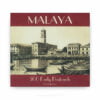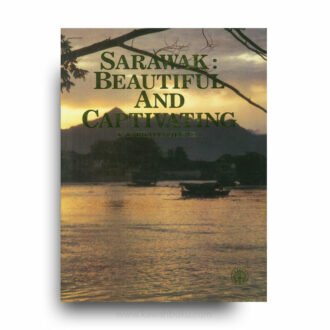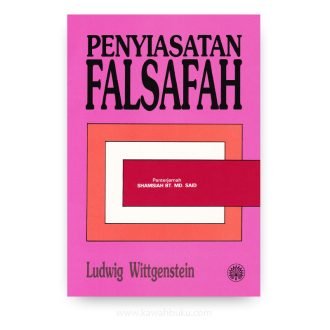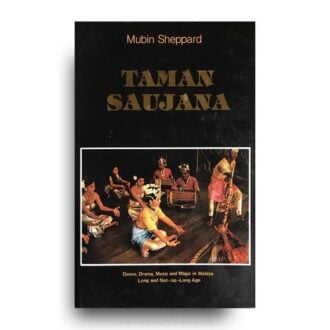Malaya: 500 Early Postcards presents a wide-ranging collection of views of the Malay Peninsula through picture postcards from the late 19th century to the middle of the 20th. The country’s changing landscapes and townscapes are vividly captured in a series of postcard galleries: the Federated Malay States (Pahang, Perak, Selangor and Negri Sembilan), the Unfederated Malay States (Johore, Trengganu, Kelantan, Kedah and Perlis), and two of the Straits Settlements (Penang and Malacca). The book also traces key developments in the early production of picture postcards in Malaya. Based on the personal collection of the author, Malaya: 500 Early Postcards is an important source of information on postcards from a collector’s point of view. It is also a richly informative visual document of a formative period in Malaysia’s history. This book is arranged on a geographical basis, and the main galleries are complemented by an additional chapter on picture postcard booklets, multiview and panoramic picture postcards. Various philatelic aspects of picture postcards are also discussed.
The earliest known of any postcards is the private cards, known as the “Lipman’s Postal Cards”, that were printed in the United States in 1861. Austria is credited with the production of the first official (governmental) postcard in 1869, following a proposal put forward by Dr Heinrich von Stephan, the director of its postal service, in 1865. The Straits Settlements introduced the first postcard in 1879.
A distinction can in fact be made between two types of postcards: the postal stationery postcard and the picture postcard. The first picture postcard was produced in Britain in 1894. By the end of the 19th century, picture postcards were produced almost worldwide. In view of the colonial history shared by these two countries, it is not surprising that the history of picture postcards in Malaya, in general, is similar to that in Singapore.
The earliest known picture postcard of Malaya (Penang) was dated 1 August 1898; this is a year earlier than the earliest card described by Khoo and Wade. This type of card may be described as a picture postcard with multiple vignettes or thumbnail views, or as a photomontage. Another early picture postcard of Penang was sent on 10 December 1898 to Austria. Picture postcards of Malaya prior to 1900 are rare. One other rare example in the author’s collection is a black-and-white multiview picture postcard also sent from Penang to Austria.
The earliest picture postcards in 1897 consisted of the 3¢ carmine Queen Victoria postal stationery postcard issued in 1893 by the postal department of the Straits Settlements. A thin black-and-white real photograph or picture was layered on the message side; the result is known as a postal stationery picture postcard.
Under the Universal Postal Union (UPU) regulations, the address side of the postcard was reserved for the sticking of the postage stamp, the writing of the name of the addressee and the destination address. This “Undivided-Back” picture postcard format has no central vertical line. The obverse side (picture or view side) has either one picture or multiple vignettes occupying a portion, with the remaining empty space reserved for the message.
Prior to 1906, picture postcards in Malaya were Undivided-Backs. As in Singapore, the “Divided-Back” format was introduced in 1906. Divided-Back picture postcards had a vertical line separating the name and address of the addressee from the message, thus permitting a longer message to be written. This was an obvious advantage over Undivided-Back picture postcards although the latter continued to be sold and used after 1906, as publishers had considerable stocks of them.
Postal rates varied according to the destination and period. For local addresses within the Straits Settlements and the Federated Malay States, the rate started at 1¢ in 1899 and rose to 4¢ by 1941. The British Empire rate started at 3¢ and rose to 4¢, with the postal rates for the rest of the world moving from 3¢ to 8¢ during over the same period. The 3¢ rate was the most common rate for British colonies. During the early years, using the “printed matter” rate was a cheap way to send picture postcards. Hence a lot of picture postcards exist with the word “POSTCARD” deleted and replaced by other terms such as “PRINTED MATTER”, “PRINTED PAPER”, or even “BOOK POST”. With the advent of regular air services in the 1930s, special airmail rates for picture postcards were introduced. However, these rates were much more expensive than printed matter rates and were not often used.
The period 1906-1914 might be considered the “Golden Era of Picture Postcards” with a rise in the number of cheap privately printed picture postcards, and postal rates. It ended with the outbreak of World War I.
Most early picture postcards of Malaya are in black-and-white (especially the photographic picture postcards) or in multicolour. Though monochrome picture postcards in Singapore exist in sepia, azure, green or orange colours, only black-and-white and sepia-toned picture postcards have been found in Malaya. The picture-postcard is a product of photography, and its history parallels advances in photographic technology. Most of the early publishers of picture postcards in Malaya were German photographers.
The first picture postcards of Singapore were published by the German photographer G.R. Lambert, who also published picture postcards of Malaya (Johore, Pahang, Malacca and Perak). However, in Penang, the first picture postcards were produced by another German photographer, August Kaulfuss, who did not produce any Singapore picture postcards. Perhaps the two German photographers had demarcated their territories.
G.R. Lambert opened his photographic studio in 1875, but he left Singapore in 1885 and, from 1885 to 1905, the firm was managed by another German, Alexander Koch. From 1905, the firm was managed by H.T. Jansen, also German. Their head office was in Singapore, but they had a branch in Kuala Lumpur as well. It was in this branch that many picture postcards of Johore, Kuala Lumpur and Perak were produced.
August Kaulfuss was the oldest and most established European photographer in Penang. He was born in 1861 and came to Penang in 1883, before starting up his photography business three years later. He produced many photographs of locations from Penang to Johore. He was also a photographer to the Sultan of Kedah. Kaulfuss published many beautiful picture postcards of Penang and northern Malaya. C.J. Kleingrothe, another German photographer based in Medan, Dutch East Indies, published a few picture postcards of Penang during the early 1900s. The Japanese photographer publisher M.S. Nakajima was truly pan-Malayan—he published picture postcards of Penang and most of the other Malayan States, and of Singapore.
Picture postcard publishers are often given as the photographers of the picture postcards; often no distinction can be made between the two roles, so far as the imprint on the picture-postcard is concerned. Besides G.R. Lambert and August Kaulfuss, mentioned above, two other publishers are known to have produced picture postcards of the whole of Malaya and Singapore. They are Raphael Tuck & Sons of London, and Nakajima & Co. of Singapore.
Raphael Tuck & Sons had been established in London in 1806 and the firm was the “Art Publishers to the King and Queen”. They produced numerous multicolour “Oilette” picture postcards of the “Wide Wide World’; these included several of Penang, Kuala Lumpur and Singapore.
Nakajima & Co., a firm based in Singapore, were artistic photographers who produced many photographic picture postcards of Penang, Malaya and Singapore. Rumour has it that they were spies for Japan prior to its invasion of Malaya and Singapore in 1941-2, for among their favourite subjects were strategic infrastructures such as bridges, roads, railways, rubber plantations and ports.
Koh & Co. published a few beautiful picture postcards of Johore and Malaya. The firm was founded in Singapore by Mr Koh Hoon Teck in 1905. According to its advertisement in 1908, the price of uncoloured picture postcards was 30¢ per dozen; those of coloured ones were 50¢ per dozen. The price of Tuck’s picture postcards was $1.20 per dozen. Other publishers did exist, such as The Federal Rubber Stamp Co., S.M. Manicum, M.J. Penang etc., but little is known about them.









Reviews
There are no reviews yet